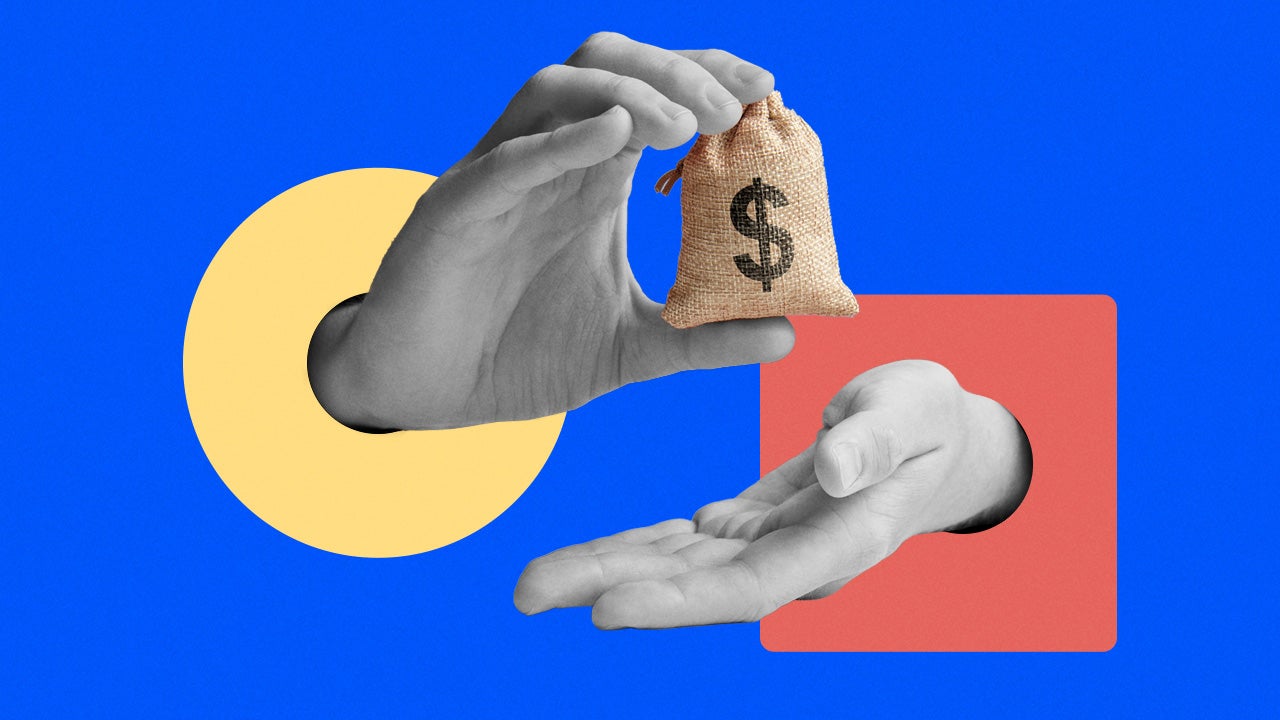What you need to know about short-term loans




Key takeaways
- Short-term loans provide financing with a brief repayment period and little to no collateral requirements.
- These loans are generally capped at $2,000 and are often used by borrowers who are strapped for cash or who have a low credit score.
- Loan funds are provided quickly, but you’ll likely pay steep interest rate due to the level of risk the lender takes on.
- There are alternatives to short-term loans that could be less expensive and better for your financial needs.
Short-term loans offer quick funding and often require little to no collateral, making them seem attractive in a crunch. In exchange for the convenience, however, you’ll pay hefty interest rates and high fees — and the repayment timeline also may only be a few weeks long. For these reasons, short-term loans are best approached with caution.
What are short-term loans?
Short-term loans are loans with little to no collateral. They are repaid in a year or less, sometimes within just a few weeks or months. Most require proof of employment with a certain monthly salary, a bank account, driver’s license or another form of ID.
Because there is often no collateral and the credit requirements are lower, these loans charge a higher interest rate (up to 400 percent) and may have other fees and penalties.
How do short-term work?
Many of these loans can be applied for and received quickly. You simply submit your application (usually online) and proof of employment or other credit information. Then the company reviews it and offers you the loan terms, including the amount, interest rates, fees and repayment schedule. If you agree, you sign the contract and get your money, often in as little as 24 hours.
Most short-term loans are offered for less than $2,000, with repayment due in weeks.
Types of short-term loans
Short-term loans come in several types, each with different characteristics, fee structures and terms:
- Payday loans: A payday loan provides cash for borrowers as they await their next paycheck. Usually, the only requirement is a pay stub to prove you have a job. These loans often require prompt payback — as soon as your next paycheck clears — and many come with enormous APRs and fees.
- Car title loans: Another type of short-term loan, a car title loan, allows you to use your vehicle as collateral as long as it’s owned outright. Lenders may only allow you to borrow just 25 to 50 percent of your car’s market value. Like payday loans, they can come with high APRs and repayment windows as short as 15 to 30 days. If you’re late with payments, the interest charges mount, and the loan will cost you far more.
- Bank overdrafts: While not technically a loan, bank overdrafts allow you to withdraw funds from your bank account even when you don’t have the money. However, this option typically comes with a costly overdraft fee.
- Emergency loans: An emergency loan is a type of installment loan that can help fund unexpected expenses. You will have regular, frequent payments over some time until the principal and interest have been repaid.
- Lines of credit: Some bad credit lenders offer unsecured and secured personal lines of credit to give you access to funds on an as-needed basis. You can make withdrawals up to your credit limit, and you only pay interest on the amount you borrow. Once the draw period ends, the outstanding balance is converted to an installment loan.
- Cash-advance apps: Cash-advance apps allow you to borrow money from a future paycheck when you’re in a crunch. These apps tend to charge lower fees than short-term loans, or in some cases, may not charge any fee at all.
- Bad credit loans: Bad credit loans are loans that are tailored to borrowers who have a credit score of less than 580. These loans often have higher APRs then loans offered to applicants with good to excellent credit scores. They may also have a shorter repayment term or lower borrowing threshold.
Other options include lines of credit extended by banks or credit unions to bridge temporary cash flow challenges and bridge loans, which can be useful during real estate transactions when a new house has been purchased while the other property is still on the market.
Benefits of short-term loans
A short-term loan may seem attractive for a few reasons, but in most cases, the risks far outweigh the benefits.
- Rapid approval timeline: The approval process for short-term loans is often very fast. You simply submit your application and proof of employment or other credit information.
- The funds are provided quickly: Many short-term lenders deposit cash into your account in as little as 24 hours, which can be helpful if you have an emergency or unexpected expenses.
- Lower credit score requirements: The credit requirements associated with short-term loans are typically less stringent than other types of borrowing, making it easier to get approved.
Risks of short-term loans
While there are a few benefits, short-term loans should be used only as a last resort to cover expenses that must be paid when you have no other alternatives.
- Interest rates and fees: The interest rates on short-term loans are often very high. Regulations vary by state, but it’s not uncommon to see payday loans and similar credit products with an APR of 400 percent or more. Sizable late fees can accrue if you don’t repay the principal within the loan’s term.
- Short repayment timeline: Lenders expect short-term loans to be paid back quickly, usually within a year. Because of this rapid timeline, the monthly payments will be much higher than other loans. In some cases, like with payday loans, the money may need to be repaid in just a month or two weeks, which can put great stress on your finances.
- Credit score penalties: Short-term loans may also affect your credit score, both positively and negatively. Some companies make a hard inquiry on your credit, and your credit will take a slight hit. Your credit will also be negatively affected if you miss a payment or don’t pay the loan off by its due date.
- Potentially hazardous cycle: The biggest drawback to short-term loans is that they often do not adequately solve the underlying problems that cause you to need a short-term loan. In fact, with their high interest rates and fees, they can worsen the problem and become a debt trap.
When to consider a short-term loan
A short-term loan may be worth considering when you’re in a crunch and need cash quickly. They may also be worth considering if you have poor credit or no credit history established, as the requirements for approval are primarily based on your income and other factors.
Other benefits, like an increase to your credit score, will depend on the lender. In some cases, making payments on time and paying your loan off quickly can also be a tool to boost your credit score. Additionally, if you’re looking for a form of borrowing that allows you to be debt-free quickly, a short-term loan may be a good choice, as the repayment timeline is typically 12 months or less.
However, you should only consider a short-term loan if you’re confident you can repay the debt. Interest rates and fees on short-term loans are exorbitant, with many having a 400 percent APR or higher.
Alternatives to short-term loans
While these alternatives may not work for everyone, you might consider one or more of these options before you take out a short-term loan.
- Asking friends and family: If you borrow money from friends and family, make sure everyone is clear on how the money should be repaid — otherwise, the loan can damage your relationship.
- Borrowing from the equity in your home: If you have a larger emergency or one that is not urgent and own a home, you may be able to tap into your equity with a home equity loan or home equity line of credit (HELOC). However, both of these options usually take a few weeks.
- Buy now, pay later loan: Buy now pay later (BNPL) services are growing in popularity. They allow borrowers to make interest-free installments over a set time, typically about six weeks. While choosing a longer repayment timeline may sometimes mean paying interest, a BNPL loan can be a less expensive option than typical short-term loans.
- Credit card: If you can use a credit card for an emergency expense, it may be a better and cheaper option than taking out a short-term loan. Credit cards can be used to cover nearly any type of expense, whether it’s home, auto or medical bills. And the interest rate is likely to be lower than a short-term loan.
- Personal loan: Personal loans can also be an alternative to short-term loans. The terms and rates you get vary depending on your credit, but they’re usually much better than most short-term loans. Personal loans typically have a fixed repayment period of a couple of years, which means smaller, more manageable monthly payments.
- Personal line of credit: A personal line of credit is another way to cover unexpected expenses in an emergency or help meet a cash shortfall. You can draw from your credit line as needed. And similar to a credit card, you only pay interest on the amount you use.
- Salary advance: Some employers may offer salary advances — paying you in advance for future wages. The advance is then deducted from your future earnings. Not all employers offer this type of program, and the apps may charge a fee or interest for the service.
Bottom line
Although short-term loans are convenient and may seem like a great way to fix a temporary problem, they come with many risks. The fees and interest rates can top 400 percent, and payback terms can be as little as two weeks.
Missing payments will negatively affect your credit score and cost you more late fees, penalties and interest. This can lead to a cycle of debt that is difficult to break out of. Research all your options and consider alternatives before you apply for a short-term loan.
You may also like

Working capital loan vs. small business loan

How much will a short-term business loan cost?

Should I get a personal loan? Here are the pros and cons

What are instant loans? Everything you need to know
